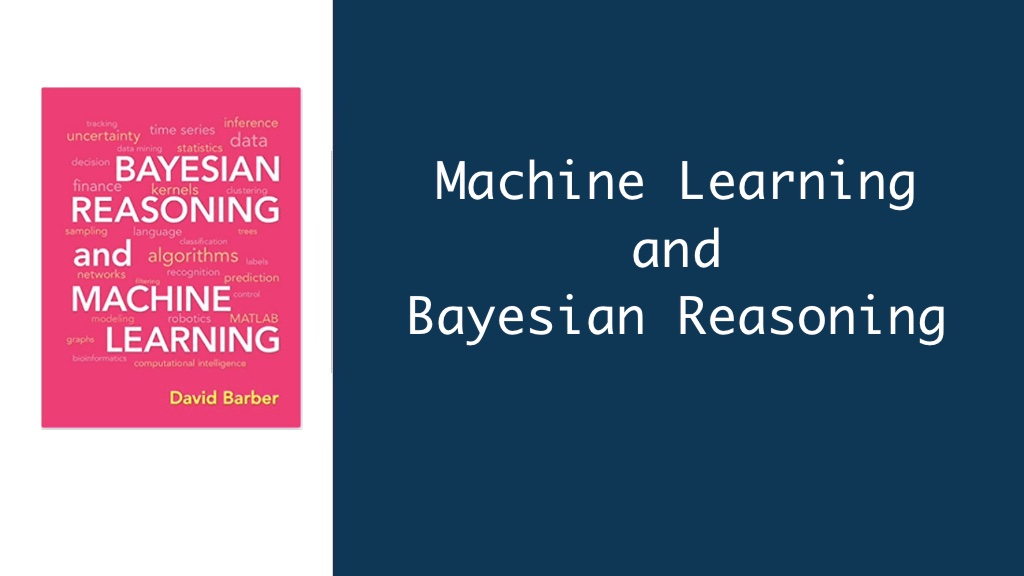Machine learning (ML) has revolutionized various fields, from healthcare to finance. However, many ML algorithms are often seen as black boxes – powerful tools that deliver results without necessarily revealing the underlying reasoning. This is where Bayesian reasoning steps in, offering a complementary approach that injects a dose of logic and probability into the world of ML.
What are Machine Learning and Bayesian Reasoning?
- Machine Learning: ML algorithms learn from data, identifying patterns and relationships that allow them to make predictions on unseen data. They excel at handling complex problems and adapting to new information.
- Bayesian Reasoning: This is a statistical framework that allows us to update our beliefs based on new evidence. It uses Bayes’ theorem, a mathematical formula, to calculate the probability of an event occurring given some prior knowledge or evidence.
Where the Magic Happens: How They Work Together
While seemingly distinct, ML and Bayesian reasoning can be combined to create powerful tools for data analysis. Here’s how:
- Probabilistic Modeling: Bayesian reasoning allows us to express the uncertainty inherent in real-world data. This uncertainty can be incorporated into ML models, leading to more robust and interpretable results.
- Learning from Limited Data: Bayesian inference, a core tenet of Bayesian reasoning, allows us to learn from smaller datasets compared to traditional ML techniques. This is particularly valuable in situations where acquiring large amounts of data is expensive or impractical.
- Continuous Learning: Bayesian models can continuously update their beliefs as new data becomes available. This allows them to adapt to changing environments and improve their performance over time.
Applications and Examples
Here are some compelling applications where machine learning and Bayesian reasoning join forces:
- Spam Filtering: Email spam filters leverage Bayesian reasoning to analyze incoming emails and calculate the probability of them being spam based on past data and characteristics.
- Recommender Systems: These systems use both user behavior data and Bayesian techniques to personalize recommendations, predicting what a user might be interested in based on their past actions and preferences.
- Anomaly Detection: By analyzing data for deviations from the norm, machine learning algorithms combined with Bayesian reasoning can effectively detect anomalies in areas like network security or financial transactions.
The Power and the Promise: Advantages and Considerations
While the marriage of machine learning and Bayesian reasoning holds immense potential, it’s crucial to acknowledge both its advantages and limitations:
Advantages:
- Improved Model Performance: By incorporating probabilistic reasoning, machine learning models can achieve better accuracy and robustness, especially with limited data.
- Enhanced Interpretability: Bayesian methods can help us understand how models arrive at their predictions, making them more reliable and trustworthy.
- Flexibility: Bayesian reasoning can be readily integrated into various machine learning algorithms, offering a versatile framework for data analysis.
Considerations:
- Computational Cost: Bayesian inference can be computationally expensive, especially for complex models.
- Choice of Priors: The effectiveness of Bayesian models relies on defining appropriate prior probabilities, which can impact the final results.
- Model Complexity: Balancing model complexity with interpretability can be challenging, particularly when dealing with large datasets.
The Future Landscape: Collaboration and Innovation
The synergy between machine learning and Bayesian reasoning is likely to continue shaping the future of data science. Here are some exciting areas for exploration:
- Scalable Bayesian Inference: Developing more efficient algorithms for Bayesian inference will pave the way for applying these techniques to even larger and more complex datasets.
- Deep Learning and Bayesian Methods: Integrating Bayesian reasoning with deep learning architectures can lead to advancements in areas like natural language processing and computer vision.
- Explainable AI with Bayesian Techniques: Leveraging Bayesian methods to explain how complex ML models arrive at their predictions will be crucial for building trust and wider adoption of AI technologies.
By fostering this powerful collaboration, machine learning and Bayesian reasoning have the potential to unlock deeper insights from data, leading to more intelligent and reliable AI applications across diverse fields.
